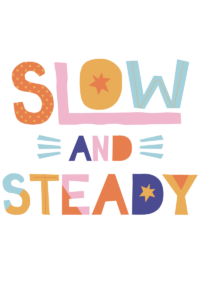What Are Rich Tasks?
Recently there has been a lot of buzz around the word “Rich Tasks” or “High- Quality tasks”. It’s not a new concept just one that has been brought to the surface. So what does a rich or high-quality tasks entail? Most research suggests that these tasks are engaging, active, equitable, of high cognitive demand and at times open-ended.
There has been some confusion around the term “high-quality”, it does not mean drill sheets, with many problems that have a specific route to get the answer. Instead, it means an activity where there are many pathways to get to the solution. Students solve these problems using their own strategy, and the teacher helps students bridge the strategies together. With this type of instruction, we eliminate the notion that there is a “specific” or “correct” strategy to use.

Productive struggle (another hot term lately) is part of completing a rich task. Students have to wrestle with their ideas, make conjectures and try out different strategies.
Jo Boaler describes them as having “low floors and high ceilings,” meaning every student can participate at their own level. Some students may solve the tasks concretely, pictorially, or abstractly. All ways are excepted.
Many people feel that these problems have to be a real-world situation, that is a misconception. The task CAN be a real world, but the main priority is that it is INTERESTING and sparks curiosity. The goal of these tasks is not to trick kids, but instead, the goal is to make them think.
Why Are Tasks Important?
It is common knowledge that in life that we learn by doing and through social interactions. Student learning is linked to the specific tasks students experience. Brain research shows we retain ENGAGING information. If we don’t see it’s importance or are not connected to it our brain just throws it in the short term memory pile. What do most adults remember about Math? That is was boring. What specific content do most adults remember? Typically, nothing past fractions. As adults we put a lot of math in our short term memory pile, we want students to take a different direction.
If students are limited to just memorizing procedures, we are also limiting their chances to ‘think and reason’. They won’t be able to develop these strategies. And the current world wants people that have those skills. Gone are the days that knowing your time’s table determines if you are a good mathematician. If you want students to develop reasoning and problem-solving skills, we must create those environments for them.

Tasks should challenge and not just lead/prompt/spoon-feed students to get the right answer. Small group instruction often lowers the level of thinking and includes much lower-level tasks. When we have watered down tasks, we lose the opportunity to help students use and practice higher-order thinking skills. There is a place for small group instruction, but it can’t be every day.
“But I Don’t Have Time To Squeeze This In. I Have A Curriculum To Get Through”
You’re right, there is a lot of content we need to get through. Teachers have a BILLION things to do throughout the day, so we rely heavily on textbooks. Selecting tasks is the most important decision you make as a teacher. We lose the importance when we use a scripted curriculum, pacing guides, boxed or packaged programs, and when we teach page by page.

So how do we find time to implement rich tasks? By eliminating any meaningless work and unnecessary problems that we are giving. I have seen districts spend 4 weeks on division. I would argue that students don’t need a week of division with a four-digit dividend after they just had a week of division with a three-digit dividend. It’s the same skill. And what happens when you focus on the procedural steps of division? Students don’t even know when to use it because there was a lack of time in problem-solving and reasoning with that skill. We could cut unnecessary time if we involved more engaging tasks that students will most likely retain. If they maintain info, there is no need for extra weeks of practice and review.
How Can I Get Started?
Work with your schools and curriculum teams to ensure you can identify a high-quality task or even adopt one. If your curriculum does not include these types of tasks, change it.
I recommend modifying tasks from the resources teachers already use. Modifying tasks work best when you are working with a math coach, a professional learning community, or grade level meetings. The collaboration will help spark ideas on how a task can be made more productive.

Many say high-quality tasks should be linked to your big idea or essential question. Start the year by introducing students to this way of thinking. Begin with last year’s standards, that you know students have covered. Extend those problems by making it more open-ended.
Ensure students understand that a problem is a puzzle. There is no certainty on how to proceed. Keep in mind rich tasks don’t HAVE to be word problems. When I was a classroom teacher, I gave the following question during the first week of school. It doesn’t necessarily have “math” in it, but it did have them think. When students know that struggle is expected, and they reach success in a solution, it provides intrinsic motivation. They feel good. Wouldn’t you?

What Should I Do While Students Are Working On A Task?
We don’t just want to let students go off, do a problem, cross our fingers and hope that by the end everyone’s got it. The interaction you have with students during this time is critical. Rich tasks don’t have to be an hour long. Read (5 Practices) for a method on how to implement this in your classrooms.
After rich tasks are completed support students through small group instruction. The instruction shouldn’t occur that same day because you would need to plan effectively. Plus when only some students are called to the back table after completing a rich task, this gives the appearance that those are the ‘students’ whole struggled. Ex) Timmy always goes to the back table after the lesson because he didn’t get it.
Rich tasks can also be used for multiple purposes. The same tasks we choose for instruction may also be the ones we want for assessments. Assessments don’t have to be tests and quizzes.
What Can I Do Tomorrow?
Start off by identifying a high-quality task. Use your current curriculum as a resource. Then incorporate one high-quality task into your unit.
High- quality tasks can and should be done at any point during a topic of study. They are not limited to the traditional “Problem Solving Friday”. Before planning a unit think about where you may want to implement a rich task.
It can be overwhelming to choose a task. Start with one task per unit to dip your toes in. I recommend working with a math coach when implementing these tasks. Support is essential when trying something new. Speaking of support, school leaders need to be aware of these tasks and what they might look like.
You can find rich tasks at:
Want to check out more?
MEMBERSHIP SITE:
https://zennedmath.com/online-courses/
FACEBOOK GROUP: Zenned Math Teachers
https://www.facebook.com/groups/zennedmathteachers/
YOUTUBE CHANNEL: Zenned Math
https://www.youtube.com/channel/UC5njH_5LoK6G67BvZecGfnw?
WANT ME IN YOUR INBOX? Sign up for my newsletter
https://view.flodesk.com/pages/5efc876dcaabca0028b95eb5
DISCLAIMER: Some links included in this blog might be affiliate links. If you purchase a product or service with the links that I provide, I may receive a small commission. There is no additional charge to you!

